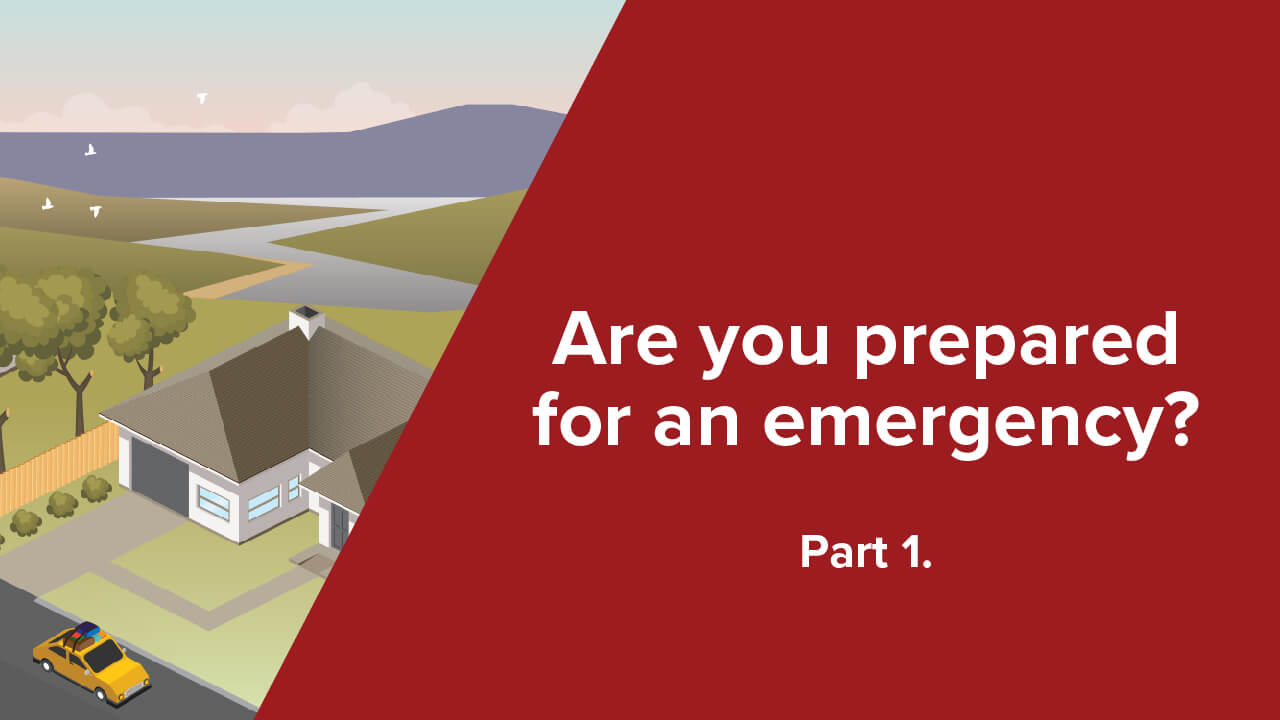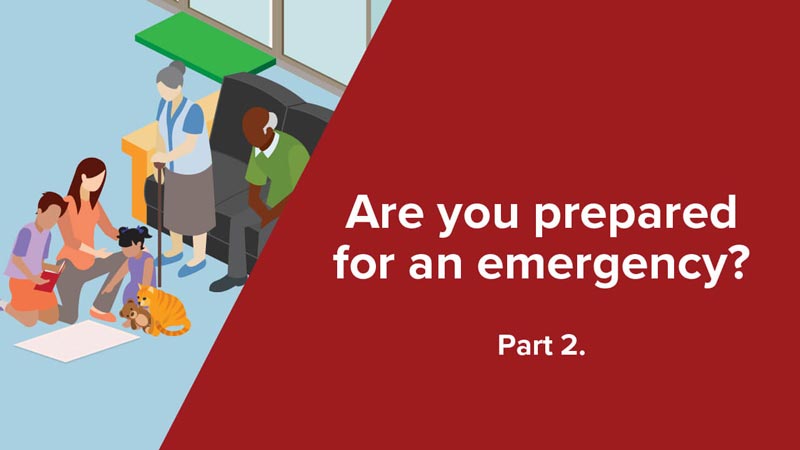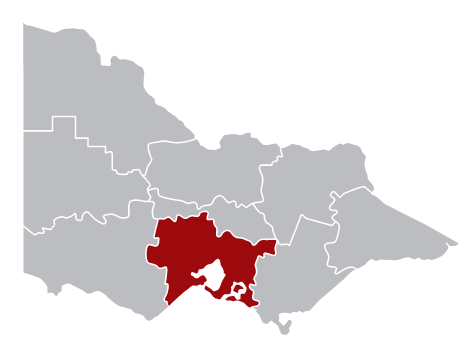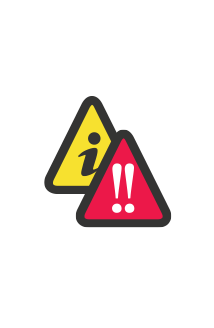Warnings aim to provide you with the best advice and information on what is happening to help you make good decisions to protect yourself and others.

Are you prepared for an emergency? Part 2
Play Video
Warning levels
Advice
An incident is occurring or has occurred in the area. Access information and monitor conditions.
Watch and act
An emergency is developing nearby. You need to take action now to protect yourself and others.
Emergency warning
You are in imminent danger and need to take action immediately. You will be impacted.
Prepare to evacuate/ Evacuate now
An evacuation is recommended or procedures are in place to evacuate.
Additional messages
All clear
Emergency activity in the area has subsided and is no longer a danger to you.
Community information
A newsletter containing updates for communities affected by an emergency.
Can also be used as notification that an incident has occurred but there is no threat to community.
When information about emergency weather is given or a Total Fire Ban is declared remember the Frankston, Greater Dandenong, Kingston and Mornington Peninsula council areas are in the Central District or Central Region.

Remember: do not wait for an official warning to leave. Emergencies can start quickly and threaten you within minutes. It is not always possible for a warning to be issued before an emergency is impacting you. You may be the first to know about an emergency so be prepared to call Triple Zero (000).
If you receive a warning, take it seriously, failure to act can be fatal:
- Stay calm. Stop what you are doing and pay attention.
- Follow the advice of warnings immediately. People die or are put in danger because they don’t respond right away.
- If you don’t understand the warning, get someone to explain it. Ask neighbours, family or friends or call the VicEmergency Hotline on 1800 226 226.
- Keep in contact with family members. Make sure they know what is happening and what you plan to do.
- Stay informed. Keep listening for more information in case the situation changes.
Know where to get accurate emergency information from multiple sources. Never rely on just one source. See below for how to stay informed.
Other warnings and information
A range of other warnings, alerts and information are available that can help protect your health and safety. They include:
Health Alerts
Heat Health Alert
Heat health alerts are issued when the forecast temperatures and conditions are likely to impact on human health resulting in increases in heat-related illness and even potentially death.
You can subscribe to heat health alerts here.
Health Alerts and Advisories
Health alerts and advisories are issued by the Chief Health Officer as needed to help reduce the impact of health issues on the community through providing advice and information.
You can subscribe to health alerts and advisories here.
Smoke impacts – AirWatch
AirWatch is a map showing air quality information measured by the Environmental Protection Authority (EPA) monitoring stations around Victoria.
Thunderstorm Asthma Forecasts
The thunderstorm asthma forecast system monitors for conditions where epidemic thunderstorm asthma is possible. The forecasts are usually issued in grass pollen season (start of October to the end of December). Forecasts do not mean that an epidemic thunderstorm asthma event is certain to occur, rather they inform people that they should be prepared.
River, Creek and Beach Water Quality Alerts
Water quality alerts are issued by the EPA, Melbourne Water and the Department of Environment, Land, Water and Planning (DELWP). They are designed to provide information on issues affecting Port Philip Bay and surrounding waterways.
During summer a Beach Report is also available which forecasts the water quality’s suitability for swimming.
You can also subscribe to receive alerts when the water at selected Port Philip Bay beaches is forecast to have poor quality here.
Fire Danger Information
Total Fire Ban
A Total Fire Ban will be declared by the Country Fire Authority (CFA) on days where the weather conditions are such that fires are likely to spread rapidly and could be difficult to control.
Total Fire Bans tell you what fires you can and cannot have and what activities are banned on a particular day.
Even if your area has not been declared a Total Fire Ban, Fire Danger Period restrictions may still apply. Total Fire Bans are normally issued by 5pm the day before but can be declared at any time so always check here for the latest information.
Fire Danger Rating
The Fire Danger Rating tells you how dangerous a fire would be if one started. A lower Fire Danger Rating does not mean that fires will not occur. The Fire Danger Rating system is not a measure of the likelihood of a bushfire. These can occur at any time.
Rather the Fire Danger Rating is your prompt to take action to stay safe. It helps you to know when conditions are dangerous enough to put your bushfire survival plan in to action.
Planned burns in the next 10 days – map and list
The map and list show planned burns in State parks and forests for the next 10 days (note: information on council or private planned burns may not be available).
You can subscribe to the Planned Burning Notification System here.
Flood Watch and Warning
Flood Watch
The Bureau of Meteorology issues a Flood Watch to provide early advice of a developing situation that may lead to flooding. A Flood Watch is not a warning of imminent flooding.
Flood Warning
A Flood Warning is issued when the Bureau of Meteorology is more certain that flooding is expected. Flood Warnings will generally include predictions of the severity of expected flooding such as minor, moderate or major flooding.
Flood Warnings are distributed using the VicEmergency warning system – see below for how to stay informed.
Weather Warnings
Severe Weather Warning
Severe weather warnings are issued to alert communities when severe weather is forecast to occur in an area or move towards an area. The warning will describe the area under threat and what hazards to expect.
Examples of when severe weather warnings may be issued include sustained winds of gale force (63km/h or more), wind gusts of 90km/h or more, very heavy rain that could lead to flash flooding, abnormally high tides, or unusually large surf waves expected to cause dangerous conditions on the coast.
Severe Thunderstorm Warning
Severe thunderstorm warnings are issued to alert communities of forecasted or developing dangerous thunderstorm conditions which could cause significant localised damage through damaging wind gusts (wind gusts exceeding 90km/h), large hail, flash flooding from heavy rain fall or tornadoes.
For further information from the Bureau of Meteorology on weather and warning services available click here. Also see the Severe Weather Knowledge Centre.




